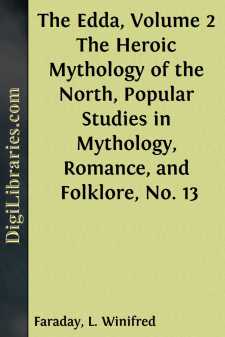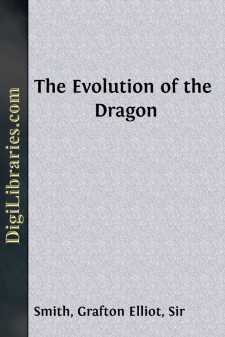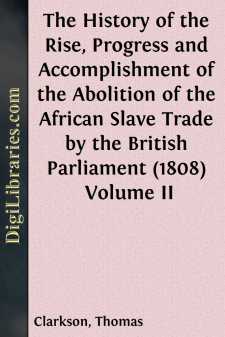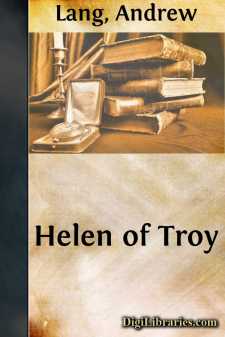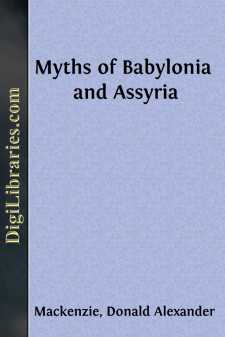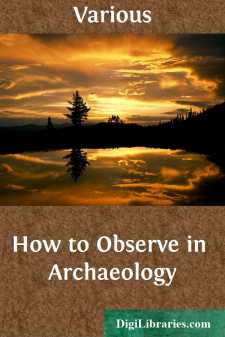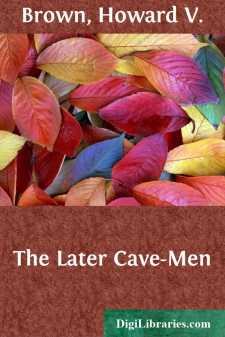Social Science
Social Science Books
Sort by:
CAN read the book of the past? Who can tell us the story of Creation's morn? It is, not written in history, neither does it live in tradition. There is mystery here; but it is hid by the darkness of bygone ages. There is a true history here, but we have not learned well the alphabet used. Here are doubtless wondrous scenes; but our stand-point is removed by time so vast, the mist of years is so...
more...
The Heroic Mythology of the North Sigemund the Waelsing and Fitela, Aetla, Eormanric the Goth and Gifica of Burgundy, Ongendtheow and Theodric, Heorrenda and the Heodenings, and Weland the Smith: all these heroes of Germanic legend were known to the writers of our earliest English literature. But in most cases the only evidence of this knowledge is a word, a name, here and there, with no hint of the...
more...
PREFACE. Some explanation is due to the reader of the form and scope of these elaborations of the lectures which I have given at the John Rylands Library during the last three winters. They deal with a wide range of topics, and the thread which binds them more or less intimately into one connected story is only imperfectly expressed in the title "The Evolution of the Dragon". The book has been...
more...
by:
Thomas Clarkson
CHAPTER I. Continuation from June 1788 to July 1789—Author travels to collect further evidence—great difficulties in obtaining it—forms committees on his tour—Privy council resume the examinations—inspect cabinet of African productions—obliged to leave many of the witnesses in behalf of the abolition unexamined—prepare their report—Labours of the committee in the interim—Proceedings...
more...
by:
Andrew Lang
BOOK I—THE COMING OF PARIS Of the coming of Paris to the house of Menelaus, King of Lacedaemon, and of the tale Paris told concerning his past life. I. All day within the palace of the King In Lacedaemon, was there revelry,Since Menelaus with the dawn did spring Forth from his carven couch, and, climbing high The tower of outlook, gazed along the dryWhite road that runs to Pylos through...
more...
Introduction Ancient Babylonia has made stronger appeal to the imagination of Christendom than even Ancient Egypt, because of its association with the captivity of the Hebrews, whose sorrows are enshrined in the familiar psalm: In sacred literature proud Babylon became the city of the anti-Christ, the symbol of wickedness and cruelty and human vanity. Early Christians who suffered persecution compared...
more...
Wonderful as is the development of modern machinery for the manufacture of American textiles—machinery which seems almost human in the way it converts raw materials into finished cloth; just as surprising are the most primitive looms of the American aborigines, who without the aid of machinery make interesting weavings with only a bar upon which to suspend the warp threads while the human hand...
more...
by:
Ralph Adams Cram
I A WORLD AT THE CROSSROADS For two thousand years Christianity has been an operative force in the world; for more than a century democracy has been the controlling influence in the public affairs of Europe and the Americas; for two generations education, free, general and comprehensive, has been the rule in the West. Wealth incomparable, scientific achievements unexampled in their number and...
more...
by:
Various
CHAPTER I INTRODUCTORY The hints which it is the object of this volume to convey are not meant for experienced archaeologists. They are rather addressed to those who, while anxious to observe and record the antiquities which they may see on their travels, are likely, owing to lack of training, to miss things that may be of importance, or, having observed them, to bring home an imperfect record. It is...
more...
by:
Howard V. Brown
The series, of which this is the third volume, is an attempt to meet a need that has been felt for several years by parents and physicians, as well as by teachers, supervisors, and others who are actively interested in educational and social progress. The need of practical activity, which for long ages constituted the entire education of mankind, is at last recognized by the elementary school. It has...
more...



